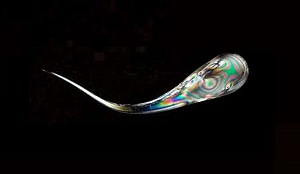Blog
LCD Display Cover Glass
One of the main concerns for outdoor LCD display is its durability. As we know an LCD screen's external surface is comprised of glass. And people's experience with glass is that it is fragile, easy to break. Such concern naturally lead us to questions like, What do we do if LCD glass breaks? Do we have to replace the whole screen?
Most people would have come across broken smart phone screen, or know someone experienced that. A lot of time you just need to replace the phone's cover glass. In the world of LCD display cover glass, the main objective is to protect the underneath LCD screen without sacrificing performance and clarity.?In Topway, we use cover glass on LCD display too, when it is deemed?suitable.?
In LCD market, there are three main type of cover glass, soda-lime, Dragontrail Glass and Gorilla Glass. Before getting into their differences, let's go over a bit of history and the two ways to create tempered glass, heat and chemical reactions.
Prince Rupert's Drop
In the 17th century,?Prince Rupert of Germany brought some special glass drops to England's King Charles II, who was intrigued by their unusual properties.??While the head of the drop is so strong that it can withstand the impact of a hammer, the tail is so fragile that bending it with your fingers will not only break the tail, but cause the entire droplet to instantly disintegrate into?powder.
 ?
?
This is believed to be the first instance of heat tempered glass.?Prince Rupert's drops are easily made by dropping red hot blobs of molten glass into water. The glass outer layer cools down much quicker than the inner portion. It contracts inside, creating a compressive stress on the surface, making it impact resistant.
Heat Tempered Glass
Heat tempered glass (not to confuse?with heat treated one) is a process of heating glass into lava like state (temperature between 560°C ~ 620°C).?During this thermal treatment, recrystallization occurs, and the molecules are realigned into a straightened pattern.
 ?
?
The heating process leads to a higher temperature tolerance?and higher durability glass. With the Mohs scale of mineral hardness from 1 to 10, diamond is at 10, heat tempered glass is about 7.
Chemical Tempered Glass
Chemically tempered glass went through a process where the glass was submerged into molten potassium nitrate for hours, creating an ion exchange reaction.?
 ?
?
?
Bigger potassium ions take smaller sodium ions' place, filling voids. The replacement creates a tougher glass yet maintaining its optical clarity. The biggest difference between chemical and heat tempered glasses is its processability. You can cut chemical tempered glass after the strengthening process, whereas it is not possible with heat tempered one.?
Soda Lime Glass
Soda lime glass is the most common form of glass produced. It is chemically tempered with 70% silica, 15% soda and 9% lime. Atoms in soda lime glass have strong atomic bonds and are highly connected. On Mohs hardness scale, its hardness is rated at 6~7. It is a great product when you find yourself on a budget but needing durable cover glass for LCD screen.
Dragontrail Glass
Dragontrail Glass is a product made by Asahi Glass Co. The glass goes through chemical and heat tempering process, and is made of an aluminosilicate material (aluminum, oxygen and silicon). The company uses a so-called float process to create Dragontrail Glass, sending liquid glass over a furnace of molten tin. Particles are then added for strengthening before the glass is quickly cooled and sent for cutting. This makes the glass 6 times stronger than soda lime glass. Dragontrail Glass can be made into various thicknesses, and it is scratch resisted.?
Gorilla Glass
Gorilla Glass made by Corning, is widely used to protect smartphone, computer and tablet?screens. Gorilla Glass is made of alkali-aluminosilicate material. The glass is firstly melted into a thin layer. Then it is placed in a bath of molten salt measuring 400°C. Potassium ions in the bath create a layer of compressive stress on the glass. Similar to Dragontrail Glass, Gorilla Glass is tough, thin and?lightweight.
Comparison
Below is the side-by-side comparison of these three glasses. They each have their pros and cons. Gorilla Glass is well-known and it offers the thinnest option. When you need?both lightweight and high rigidity, you can't go wrong with either Gorilla Glass or Dragontrail Glass. The downside however, is their costs. If all you need is standard protection on?LCD screen, soda-lime glass is a great cost effective solution.
 ?
?
In the past 20s years, Topway manufactured many TFT LCD displays with cover glasses, for medical, industrial and environmental markets. Leave us a message, and we will create you a turn-key LCD solution.
